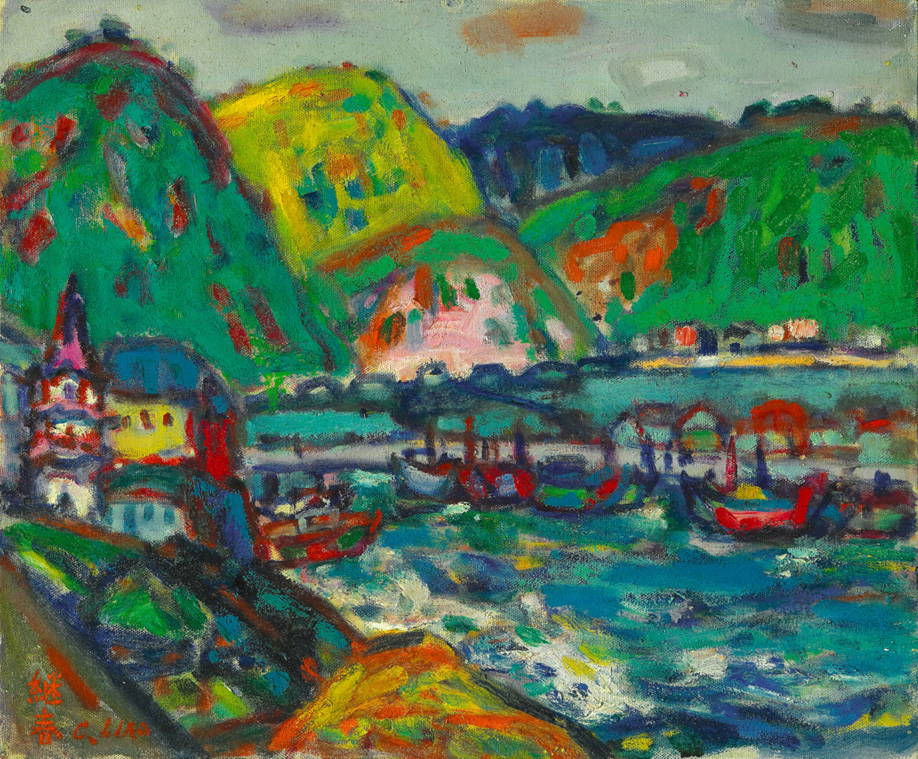|
Yehliu Scenery
|
|
1972 Oil on canvas 37.5 x 45.4 cm Signed lower left Chi-chun in Chinese and C. LIAO in English |
|
Estimate
6,800,000 - 7,800,000 209,200 - 240,000
|
|
Sold Price
10,850,000 338,692
|
|
|
The composition in this"Yehliu Scenery"painting by Liao Chi-chun resembles another oil painting from 1974 in this Spring auction, the"Canal"The focus however is on the expression of the green color tones, with simple brush strokes used to create complexity.
During the early 1970's, Liao Chi-chun made several paintings of the Yehliu seaside, all of them expressed in a different manner. For an artist, when they return to the same location to paint a landscape, what they face is a whole new challenge. The common characteristics shared by all the Yehliu themed paintings are their emphasis on the view of the mountains, the sea expressed in rich colors as well as the colorful temples, houses and ships.
Taiwan is surrounded by the seas, with the unusual and the spectacular terrain around its Northeast coast always having been renowned internationally for its natural views. The people are also very religious, and temples dedicated to the safety of the fishermen can often be found atin the fishing harbors. The color elements so important to Liao Chi-chun's paintings have their roots in folk art. He often uses the red, yellow and green colors to convey the festive moods, and the colorful tones hint at Taiwan's sub-tropical atmosphere. The bold use of pink in Chinese culture is something rarely seen in Western style paintings of the past, but the color pink is one at which Liao Chi-chun excels, breathing youthful vitality into the entire work.
The artist's approach to color can be said to be trend setting. By fusing modern elements into the natural landscape, he expresses the youthful energy of a new era. The art historian Wang Hsiu-hsiung once praised Liao Chi-chun's art as"gorgeous and harmonious Fauvism" His brush strokes are unrestrained and simple, with their colors overlaying and emphasizing each other, retaining the sense of freshness and vitality. The "Yehliu Scenery"is not a large painting but the great effort made by the artist in creating the composition, the free flowing brush strokes and the rich tapestry of colors combine to create a wondrous landscape that existed within the artis's mind.
